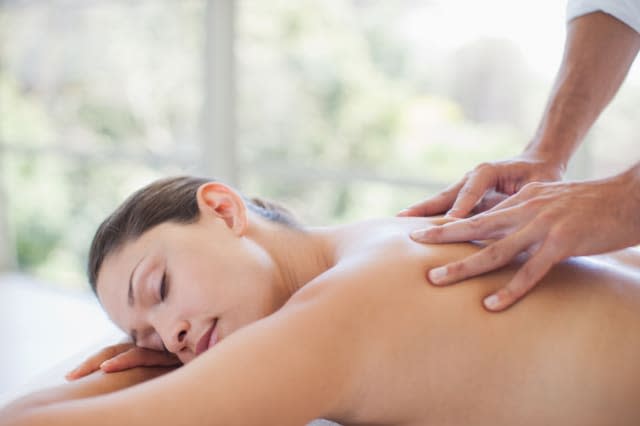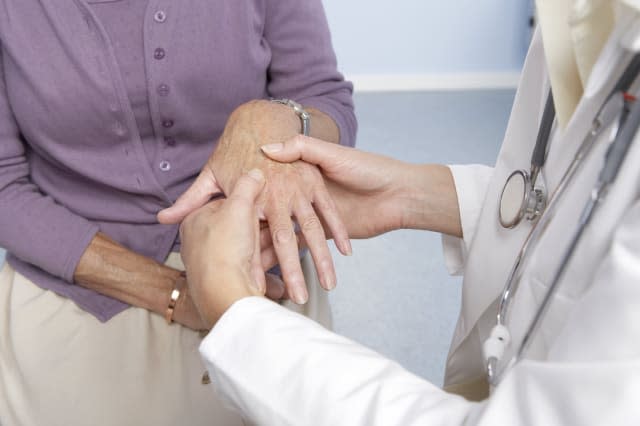Ten natural ways to ease arthritis pain


Arthritis can be very painful but there are ways to ease the pain without medication. From green tea to listening to music and meditating, here are 10 ways to ease arthritis pain...
See also: How diet affects arthritis
See also: Arthritis - should you treat the pain with heat or cold?
1. Lose weight
Carrying a few extra pounds? Experts agree that losing weight is the most important thing you can do to slow the progression of osteoarthritis. Your knees and ankles take the strain of your weight when you stand, and every pound you lose on the scales means four pounds less pressure on your knees. Lose 10 to 20 pounds and you might find your symptoms improve vastly or even disappear.
2. Exercise
People used to believe that physical activity made arthritis worse, but the opposite is true. Whether it's a walking up and down the stairs at home, or walking, cycling or swimming, regular low-impact exercise can help ease the pain of arthritis. While you should avoid running if you have knee osteoarthritis, high-intensity workouts are not off limits.
Researchers in Norway found that women with arthritis who did a spinning class twice a week for 10 weeks saw a significant reduction in inflammation. Sounds too intense? Give Tai chi a try – as well as offering gentle exercise, it helps to relieve stress which is good for reducing chronic pain.
3. Try AposTherapy
AposTherapy involves walking in specially designed, personally adjusted shoes for an hour each day. The theory is that knee pain and osteoarthritis are influenced by your gait and that changing the distribution of weight teaches the muscles to adopt a better walking pattern. Nearly 90% of arthritis sufferers who tried AposTherapy patients reported a reduction in pain in one UK clinical trial.
4. Have a massage
Arthritis pain can lead to stress, and stress can make arthritis pain flare up. Research has shown that a half-hour massage can lower the body's levels of the stress hormone cortisol, which can increase inflammatory response. Even better, a study published in the Archives of Internal Medicine found that people with knee arthritis who had a Swedish massage once or twice a week reported less pain and had more flexibility and range of motion after a few months. Can't afford massages? Get more cuddles. A firm hug has been shown to reduce levels of stress hormones in the body.
5. Listen to your favourite tunes
You know that music can change your mood, but did you know it can also shift your focus away from pain? A study published in Journal of Advanced Nursing found that people with chronic pain who listened to an hour of music each day experienced a 21% reduction in pain.
At the same time, stay away from anywhere too noisy – whether that's the grandchildren's birthday party or a road drill. Loud, jarring or consistent, irritating noises increase cortisol levels, according to a study published in Noise & Health.
6. Enjoy a cup of green tea
Swap your PG Tips for green tea, and you might notice an improvement in arthritis pain. Green tea contains a chemical called EGCG, which blocks the symptoms of arthritis. Researchers from Washington State University say that the wonder ingredient has the potential to ease joint pain, inflammation and tissue damage caused by rheumatoid arthritis.
7. Learn to meditate
Distraction techniques, such as listening to your favourite music or doing something you really enjoy, can help to take your mind off pain. No surprise then, that people who meditate regularly are better able to manage pain. Researchers from Manchester University say that when we meditate, we're focused on the present, which means we anticipate pain less. Because mindfulness meditation trains the brain to respond differently to pain, some studies suggest it may be more effective than medication.
8. Get some sun
Getting some sunshine will increase your levels of Vitamin D, which may ease arthritis pain and boost mobility by lowering inflammation and strengthening bones, say researchers from the University of Florida.
That's not all. Patients exposed to natural sunlight after surgery used 21% less pain medication than patients in sunless rooms, according to research published in Psychosomatic Medicine. It isn't just vitamin D or warmth, say experts. Seeing sunlight causes chemical changes in the brain that reduce stress and decrease pain levels.
9. Oil those painful joints
Omega-3 fatty acids found in oily fish such as mackerel, sardines and salmon, are known to reduce inflammation in the body, thereby reducing pain and stiffness associated with arthritis. Don't like fish? Take fish oil in capsule form or take a tablespoon of flaxseed oil a day. If you take blood-thinning drugs, check with your GP before taking fish-oil capsules.
10. Apply heat or cold
If your joints are red, hot or swollen, a cold pack can reduce swelling and numb pain, making it a good choice when an arthritis flare-up first starts or joints become inflamed. Try using a gel-filled ice pack, or a packet of frozen peas. To avoid ice burns, wrap it in a towel before applying to your skin. If the skin turns red or becomes numb, remove it immediately. Don't apply for more than 20 mins at a time, and don't use on skin that has cuts or sores.
If you suffer with stiff joints and sore muscles, a heat pack can help to soothe the pain and improve moment. You can buy disposable heat packs that you warm in the microwave. Wrap heat packs in a towel before placing them on the skin to prevent burns and be careful if you have diabetes or a circulation problem which can make it harder to feel pain. Never apply heat to a joint that is red, hot or swollen.



